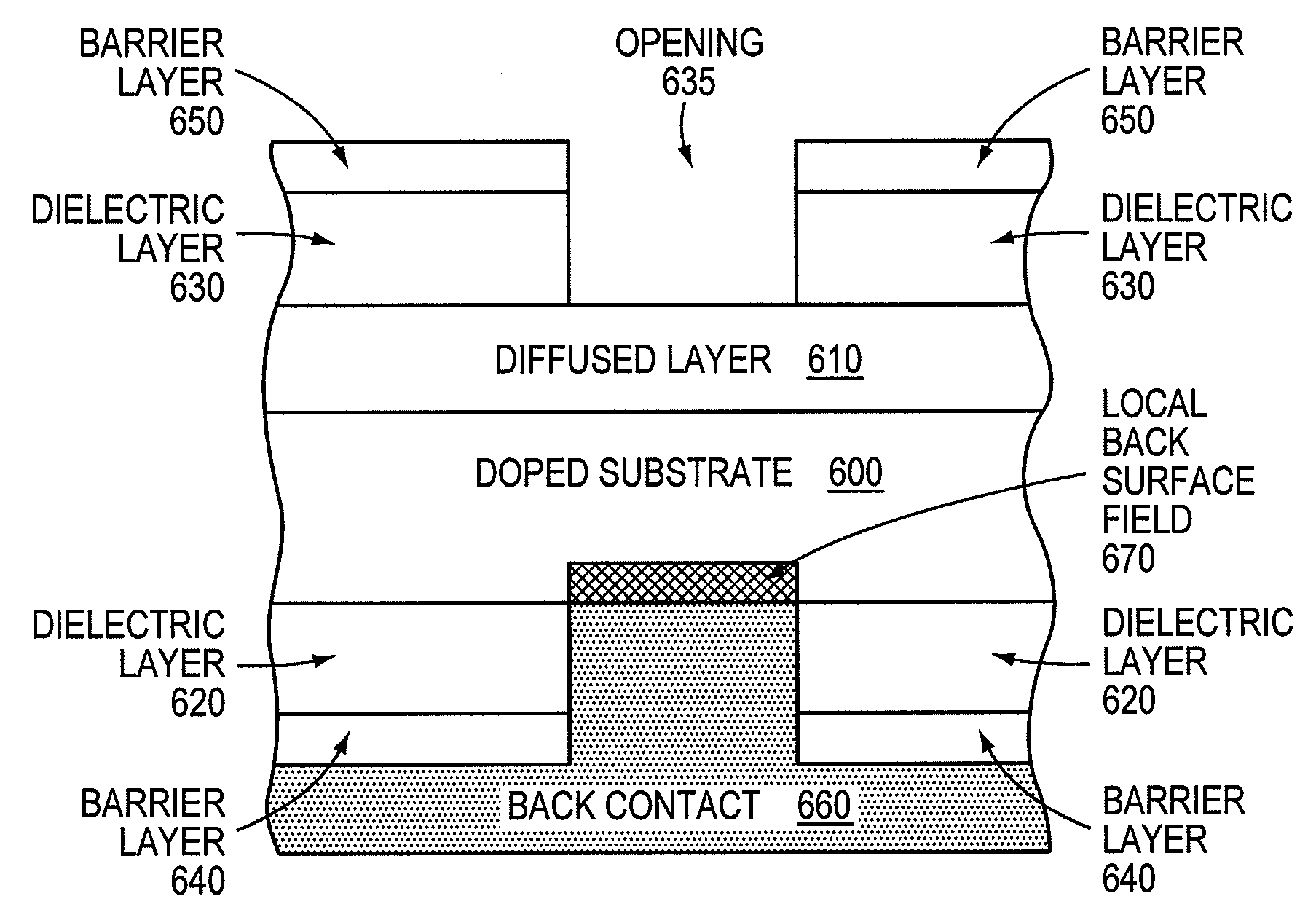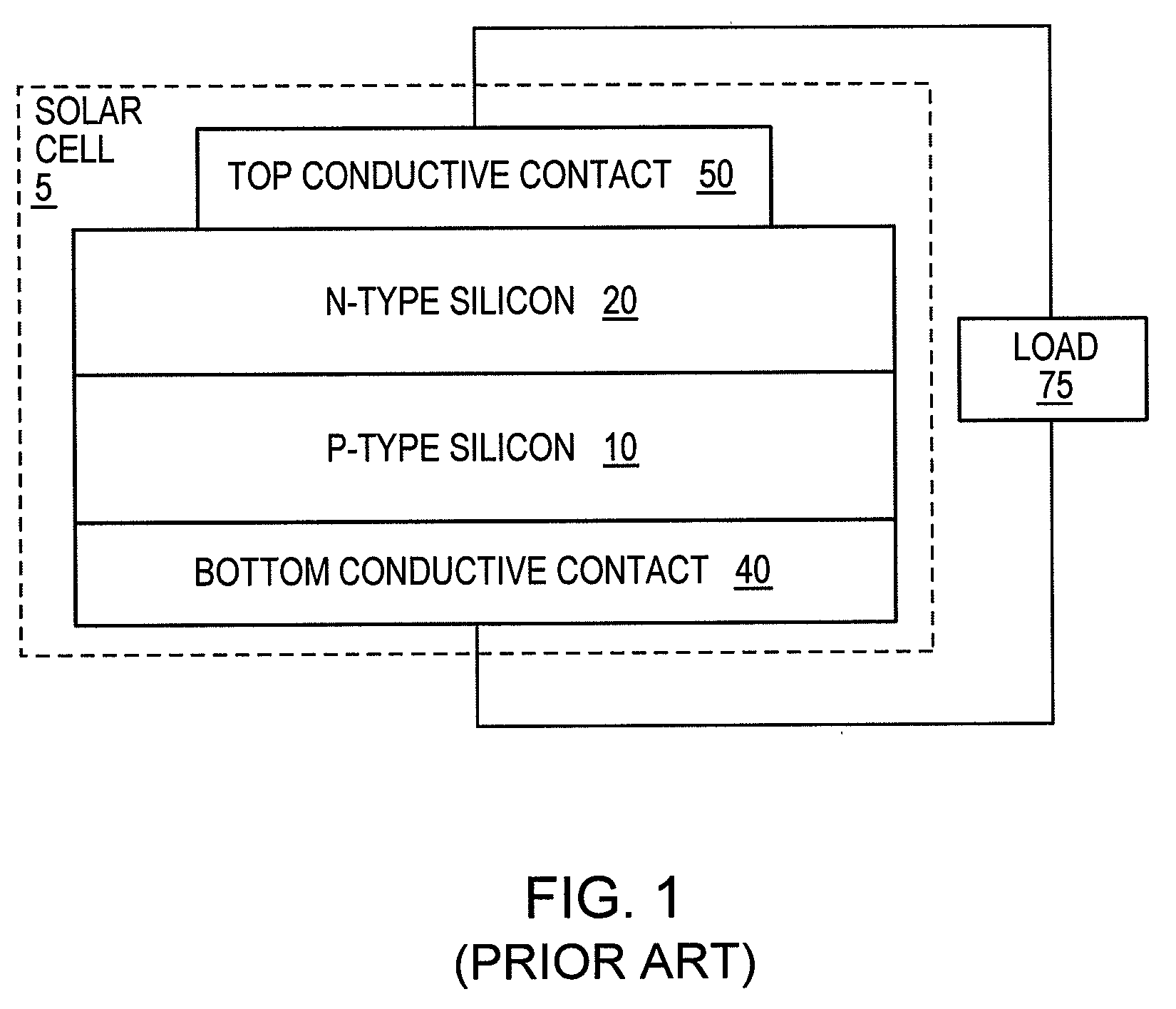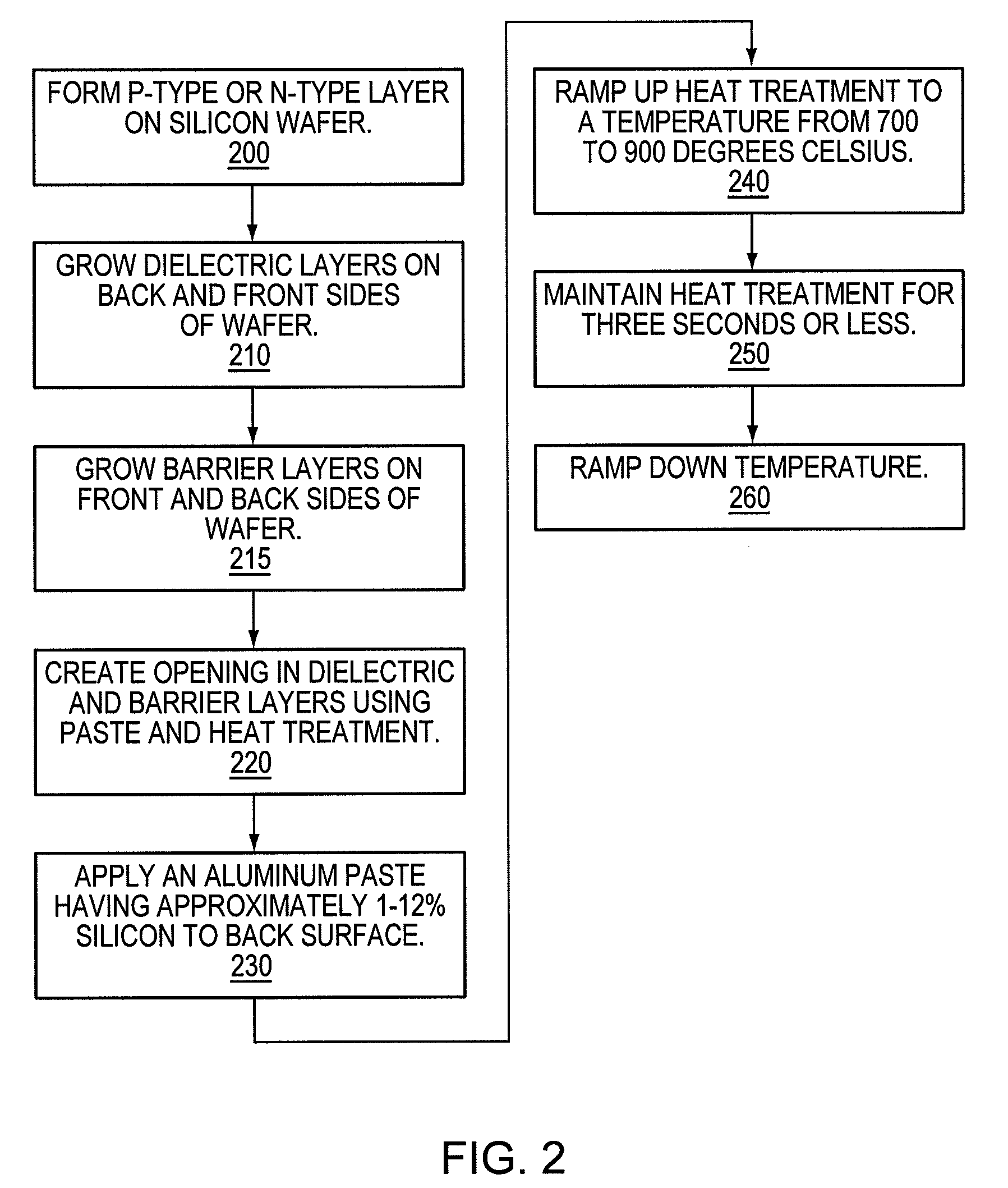Solar cell having high quality back contact with screen-printed local back surface field
a solar cell and local back surface technology, applied in the field of solar cells with high quality back contact, can solve the problems of deformation of thin film silicon wafers, and inability to protect silicon wafers from the dielectric layer
- Summary
- Abstract
- Description
- Claims
- Application Information
AI Technical Summary
Benefits of technology
Problems solved by technology
Method used
Image
Examples
Embodiment Construction
[0024]In the following detailed description, numerous specific details are set forth in order to provide a thorough understanding of the invention. However, it will be understood by those skilled in the art that the present invention may be practiced without these specific details. In other instances, well-known methods, procedures, components, and circuits have not been described in detail so as not to obscure the present invention.
[0025]FIG. 2 depicts a flowchart for forming a high quality rear contact that protects the silicon wafer from damage during the alloying process and provides a local back surface field. A local back surface field (BSF) is desirable because it helps to reduce the recombination of electrons at the solar cell's back surface. Efficiency of the solar cell is thereby increased if the solar cell has a high quality local BSF.
[0026]In operation 200, a p-type or n-type layer is formed on a silicon wafer. The silicon wafer may be crystalline. The silicon wafer may ...
PUM
 Login to View More
Login to View More Abstract
Description
Claims
Application Information
 Login to View More
Login to View More - R&D
- Intellectual Property
- Life Sciences
- Materials
- Tech Scout
- Unparalleled Data Quality
- Higher Quality Content
- 60% Fewer Hallucinations
Browse by: Latest US Patents, China's latest patents, Technical Efficacy Thesaurus, Application Domain, Technology Topic, Popular Technical Reports.
© 2025 PatSnap. All rights reserved.Legal|Privacy policy|Modern Slavery Act Transparency Statement|Sitemap|About US| Contact US: help@patsnap.com



